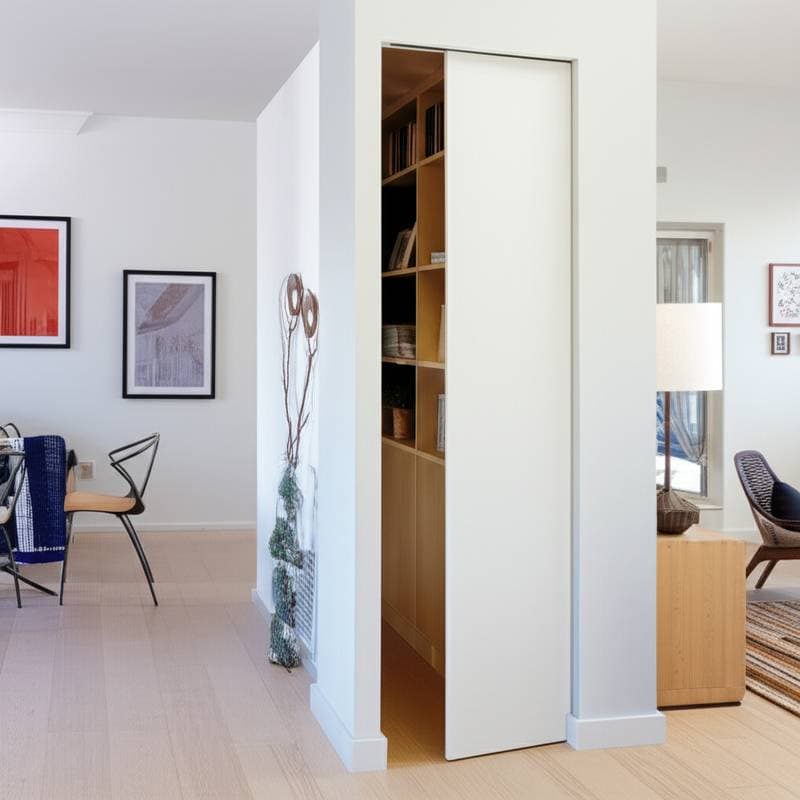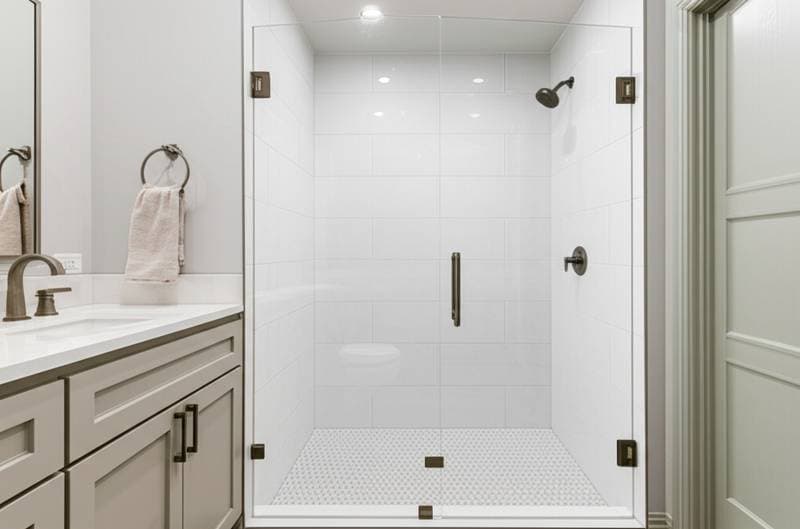Understanding Zero-Threshold Showers and Their Impact on Property Value
Zero-threshold showers, often referred to as curbless or barrier-free designs, eliminate the traditional step-up entry by creating a smooth transition from the bathroom floor into the shower area. This setup incorporates a subtle slope toward the drain to facilitate water runoff without compromising aesthetics or safety. Homeowners who prioritize aging in place or seek inclusive family environments find these features particularly advantageous, as they align with universal design principles.
Beyond functionality, zero-threshold showers contribute to real estate appeal by modernizing bathroom spaces. Real estate experts note that such upgrades can increase a home's market value by $4,000 to $10,000, depending on location, materials, and overall renovation quality. This return on investment stems from heightened buyer interest in accessible, low-maintenance features that appeal to diverse demographics, including multigenerational households and those planning for future mobility needs.
Advantages and Potential Drawbacks
Key Advantages
- Enhances accessibility for individuals across all ages and physical abilities, supporting seamless movement without barriers.
- Elevates resale potential through universal design elements that attract a wider pool of prospective buyers.
- Minimizes tripping risks and streamlines cleaning efforts by avoiding curbs that trap dirt and moisture.
- Fosters a contemporary, expansive aesthetic that visually enlarges compact bathroom areas.
- Allows personalization with integrated elements like built-in benches, strategically placed grab bars, and efficient linear drains.
Potential Drawbacks
- Demands exacting attention to floor gradients and comprehensive waterproofing to ensure performance.
- Involves higher expenses compared to conventional showers, particularly if modifications to the building structure prove necessary.
- Often requires obtaining permits for alterations to plumbing systems or load-bearing components.
- Risks water pooling or seepage if installation deviates from precise specifications.
Installation Considerations: DIY or Professional Approach
The process of installing a zero-threshold shower demands expertise in multiple trades, including plumbing adjustments, application of waterproof barriers, and potential alterations to the subfloor structure. While seasoned DIY enthusiasts might tackle simpler retrofits, the complexity typically favors professional involvement to avoid costly errors.
Project Difficulty and Timeline
Difficulty Level: High, due to the need for precision in sloping and sealing.
Estimated Time: Professionals complete the work in 3 to 7 days; DIY attempts extend this period considerably.
Essential Tools: Tile cutting saw, specialized waterproofing membranes, precision laser level, custom drain assembly, and tools for mixing and applying setting materials.
Associated Risks
Incorrectly established slopes may lead to water accumulation or inadequate drainage. Errors in waterproofing application can result in subfloor deterioration or wall damage over time. Suboptimal drain positioning compromises the entire system's efficacy.
When to Engage Professionals
Opt for a licensed contractor in scenarios involving subfloor excavation or reinforcement, relocation of plumbing fixtures, or the desire for manufacturer-backed warranties on waterproofing and tiling. Professionals well-versed in standards like ANSI A117.1 ensure compliance with accessibility codes, delivering a durable outcome. Homeowners generally achieve superior results and peace of mind by selecting experts experienced in barrier-free constructions.
Longevity and Upkeep Strategies
Constructed with quality materials and proper techniques, zero-threshold showers endure comparably to traditional tiled enclosures, frequently exceeding 20 years of service with diligent maintenance.
Essential Maintenance Practices
- Perform weekly surface wiping to inhibit the accumulation of soap residues and mineral deposits.
- Conduct monthly cleaning of drains and grout lines to maintain optimal flow and appearance.
- Apply fresh sealant to grout joints or natural stone surfaces every one to two years to preserve integrity.
- Examine caulking and underlying membranes during periodic deep cleanings to detect early signs of wear.
For showers equipped with linear drains, routinely detach and cleanse the grate to prevent obstructions. Contemporary drainage systems feature detachable components that simplify this task, promoting hygiene and efficiency.
Warranty Considerations
Waterproofing product providers frequently extend coverage when installations occur under certified supervision. Retain documentation of the installation process and material specifications to facilitate any future claims.
Regional Influences on Design and Cost
Local conditions shape the planning, execution, and budgeting for zero-threshold showers.
Environmental Adaptations
In areas with high humidity, incorporate robust ventilation systems or dehumidification units to mitigate mold growth risks. Colder regions benefit from radiant floor heating, which accelerates drying and enhances user comfort during use.
Regulatory and Market Factors
Municipal building codes may mandate specific drain inclinations or approved waterproofing solutions. For properties intended for public access or leasing, adherence to local accessibility protocols becomes essential.
Labor expenses vary, with metropolitan zones commanding premium rates for specialized skills, while rural settings might limit access to contractors proficient in curbless installations. Structural or plumbing modifications invariably necessitate permits, subject to inspection by authorities.
Permit Processes
Consult your local building department early to confirm requirements for any plumbing rerouting or floor-level adjustments. Proactive verification prevents delays and ensures regulatory alignment.
Prioritizing Safety in Design
While zero-threshold showers inherently promote safer navigation, their effectiveness hinges on meticulous construction.
Critical Safety Measures
Select flooring materials with a slip resistance rating exceeding 0.42 coefficient of friction, as outlined in ANSI A137.1 standards. Install grab bars securely into structural blocking rather than surface-mounted drywall for reliable support.
Limit water heater settings to 120°F to safeguard against burns. Position electrical outlets and lighting to comply with ratings for damp locations, minimizing shock hazards. Incorporate glare-free illumination to illuminate the space effectively.
For users with mobility limitations, integrate a foldable bench and a adjustable handheld showerhead mounted on a sliding rail. These additions further customize the space for individual needs, enhancing overall usability.
Frequently Asked Questions
How does a zero-threshold shower differ from a curbless shower?
The terms describe identical designs: a shower base level with the surrounding floor, absent any raised lip or step for entry.
Do zero-threshold showers pose leak risks?
Leaks occur only with substandard construction. Accurate sloping, thorough waterproofing, and correct drain integration eliminate such issues; engage qualified installers to mitigate concerns.
Is retrofitting possible in an existing bathroom?
Retrofitting works, though it often entails partial subfloor reconstruction or lowering. Homes on concrete slabs demand additional labor for access and modification.
Must linear drains be used?
Linear drains simplify slope management and water containment, but centered drains suffice with careful engineering.
Can this design comply with ADA requirements?
Compliance follows from precise adherence to dimensional, slope, and fixture specifications. Verify against local codes for full assurance.
Steps to Implement Your Upgrade
Implementing a zero-threshold shower delivers immediate enhancements in comfort and long-term gains in property equity. This feature harmonizes with evolving design preferences while fortifying accessibility and hazard reduction.
Solicit bids from at least three licensed contractors specializing in accessible bathroom transformations. Scrutinize proposals for waterproofing methodologies and warranty provisions. Coordinate with your municipal building office to address permitting obligations upfront.
Ultimately, a expertly crafted zero-threshold shower transcends mere aesthetics. It establishes a resilient, inviting bathroom environment equipped for varying life stages, blending practicality with enduring market advantages.










